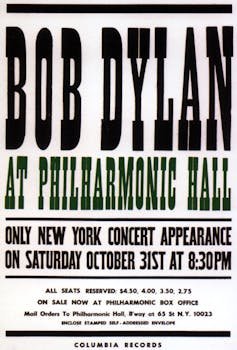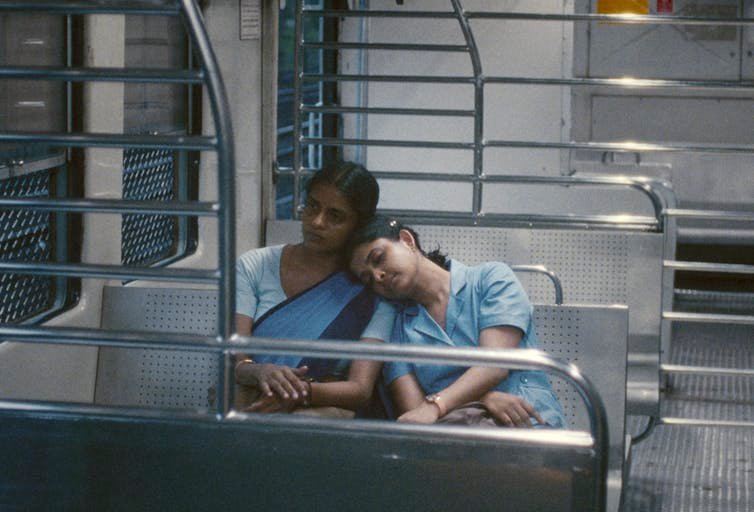“Loneliness has followed me my whole life,” says Robert De Niro’s character, Travis Bickle, in Taxi Driver. “Everywhere. In bars, in cars, sidewalks, stores, everywhere. There’s no escape. I’m God’s lonely man.”
This same quote could be used to describe De Niro’s acting oeuvre. He seems drawn to characters who experience, either through choice or circumstance, a life of loneliness and isolation.
I recently contributed to The Screen Stars Dictionary, a collection of videos about movie stars that captures their characteristics through a specific dictionary definition. My choice? Robert De Niro and the word “alone”.
Here are six examples (among many) in which De Niro’s roles embody a sense of isolation, alienation or loneliness, both visually and thematically.
Taxi Driver (1976) and The King of Comedy (1982)
Alienation is a driving force in both of these early collaborations between De Niro and director Martin Scorsese about desolate men in New York City. Taxi Driver deals with undiagnosed post-traumatic stress disorder, insomnia and a simultaneous desire and inability to forge meaningful relationships. The King of Comedy, meanwhile, is a narcissistic odyssey about comedic stardom.
De Niro’s characters in these films, Travis Bickle and Rupert Pupkin, have often been compared. They can be considered metaphorical siblings, an idea that seems intentionally emphasised through cinematography and editing styles in both films.
Paul Schrader, who wrote the script for Taxi Driver, has discussed his specific style of “monocular vision” within the film, meaning that the central protagonist is present in almost every scene. This technique enables the audience to build empathy with a character, whether or not it is deserved.
Todd Philip’s film Joker (2019), also featuring De Niro, and more recently Richard Gadd’s Netflix series Baby Reindeer (2024) use similar techniques, merging themes of loneliness, anxiety and a desire for acceptance. They both follow the blueprints that De Niro put forward in these early, closely linked roles.
Read more:
Baby Reindeer: how the Netflix TV show brings a fresh perspective to male sexual victimisation
Raging Bull (1980)
Those themes of extreme isolation, performance and even stand-up comedy come together again in another De Niro and Scorsese collaboration – Raging Bull. The film is a sports biography of the legendary middleweight boxer, Jake LaMotta.
Raging Bull charts how LaMotta’s success came at the extreme price of estrangement from his family and friends. His obsession with dominating in the ring spilled out as toxic behaviour in his domestic life, driving every meaningful relationship away.
The famous opening slow-motion sequence of De Niro warming up in the ring, set to Pietro Mascagni’s opera Cavalleria Rusticana, highlights his alienation from the beginning. Punching and weaving to an imaginary adversary indicates the internal battle within himself, while the demarcating square ring cuts him off from the onlooking crowds.
Towards the end of the film, this moment is recreated in a less glamorous scene in which the ring is replaced with a dim prison cell. Mascagni’s opera is substituted with the sound of LaMotta breaking down, screaming and sobbing as he punches the wall. He is desperate for the humanity and companionship that his temper and fists have stripped him of.
Mary Shelley’s Frankenstein (1994)
In his career of strong, character-driven roles, some may overlook De Niro’s performance as the monster in Kenneth Branagh’s adaptation of Mary Shelly’s gothic novel, Frankenstein.
The monster is the epitome of wretchedness and loneliness. Branagh’s version, a faithful retelling, depicts Victor Frankenstein’s obsession with creating a living creature from human remains. His dedication to his work drives everyone away from him. And when he finally brings his creature to life, he rejects him because of his appearance.
The monster is in turn rejected by all who happen upon it and is left defenceless, unloved and unknowing about the world. Eventually, this fuels the monster’s hatred towards Frankenstein for giving him life without love. Beneath the makeup, De Niro’s practised performance of social alienation comes through, eliciting sympathy but without the need for the monocular style used in his other works.
Heat (1995)
“Don’t let yourself get attached to anything you are not willing to walk out on in 30 seconds flat if you feel the heat around the corner.” This is the mantra of career criminal Neal McCauley (De Niro’s character in Heat) who adopts isolation as a calculated strength.
His discipline and precision make up the impetus of this crime noir, structured around a protagonist who is “alone but not lonely”. His self-imposed solitude is often stylistically emphasised either through shades of gelid blue from his ocean-view apartment or stark fluorescent lighting that eventually leads to his demise. Los Angeles is illuminated as a coldly indifferent city that is too busy to notice anyone – a quality De Niro’s character and performance capitalise on.
Awakenings (1990)
De Niro was originally cast as John Baskin in Penny Marshall’s Big (1988), a role that eventually went to Tom Hanks as the studio favoured his wide-eyed innocence. However, De Niro went on to play a similar role two years later for Marshall in a different film.
In Awakenings he plays Leonard Lowe, a young boy propelled into premature adulthood after suffering encephalitis lethargica (sleeping sickness) as a child and waking from a catatonic state decades later.
Themes of isolation, detachment and the need for companionship are again emphasised through De Niro’s performance as he tries to catch up with a life that has been taken from him. Just as insomnia plays a significant part in De Niro’s isolation in Taxi Driver, excessive sleep in Awakenings draws out further motifs of seclusion and loneliness in this heartfelt drama.










